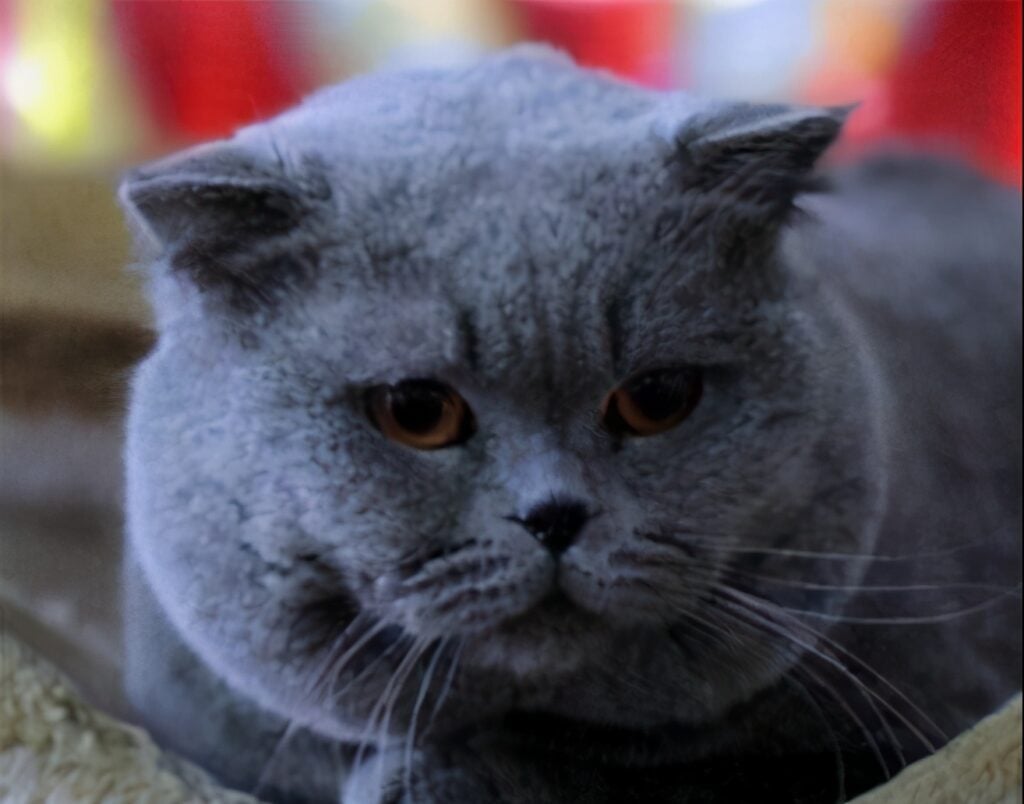If you’re a cat person, you’d definitely appreciate extra fluffy ones. But did you ever notice how stray cats develop more prominent and puffier cheeks?
Male cats that are not neutered tend to develop larger cheeks or jowls. This is often triggered by increased testosterone and is thought to be a sign of their masculinity. These larger jowls also help protect their necks during fights.
What Are Tomcat Jowls?
Jowls, by definition, are the lower part of the cheeks. They are fleshy and would often droop with excessive hormones. In cats, these are also known as stud jowls, stud cheeks, or shields. These are often intact in male cats that have not been neutered. Excessive testosterone causes the jowls to form.
Other intact males and fertile females will be able to identify strong tomcats because of their prominent jowls. During fights, they utilize these jowls as shields hence the reason it is called as such. It protects their necks during territorial fighting. (Source: Cat World)
How Do Jowls Develop?
Jowls start to develop in tomcats as soon as they reach sexual maturity. Some studies found that not neutered cats tend to develop jowls within their first year of life. At the same time, some breeders observed that not all male cats develop these features.
By the time male cats are neutered, their testosterone levels decrease. When this happens, their jowls also reduce in size. However, this is not always true. Some breeders and pet owners say that their cats could maintain the same size jowls even after getting castrated.
One thing though, not all tomcats develop jowls. Cats who have been neutered before they reach sexual maturity will not develop stud jowls. Some stud cats also do not have jowls even if they have not been fixed. It entirely depends on the amount of testosterone in their bodies. Only cats with an excess of testosterone would develop jowls. (Source: Cat World)
What Changes Occur After Cats are Neutered?
When a cat is neutered, this means its testicles are removed, and they are no longer able to reproduce. Without their testicles, they are not able to produce testosterone. Through castration, typical male cat behavior is diminished by 90%. Most common tomcat behaviors include; aggression, roaming, and territorial spraying.
What you need to know is, behavior is different from personality. While castration can modify their behavior, their personality will remain the same. (Source: Cat World)
What Are The Benefits of Neutering Your Cat?
If you are a cat owner and solely have the cat as your pet. You must understand the benefits of having your cat neutered. Here are some of the reasons why you need to have your cat neutered.
- Reduce the overpopulation of cats.
- Prevent inter-cat aggression, and other unwanted behaviors.
- Avoid the need for roaming.
- Reduce the risk of developing prostate and testicular cancer.
- Prevent the need for territorial spraying.
Most pet owners are apprehensive about having the procedure done for several things. One of the main reasons is the added expense. There are low-cost neuter clinics and free missions available if you don’t have enough to cover the cost of the procedure. Others feel that castration would make their cats fat, unhealthy, and less manly. While there may be behavioral changes, the benefits outweigh the disadvantages. (Source: Animal Health Center)
